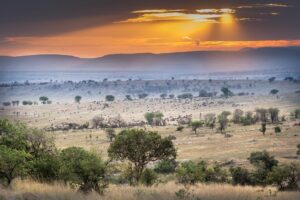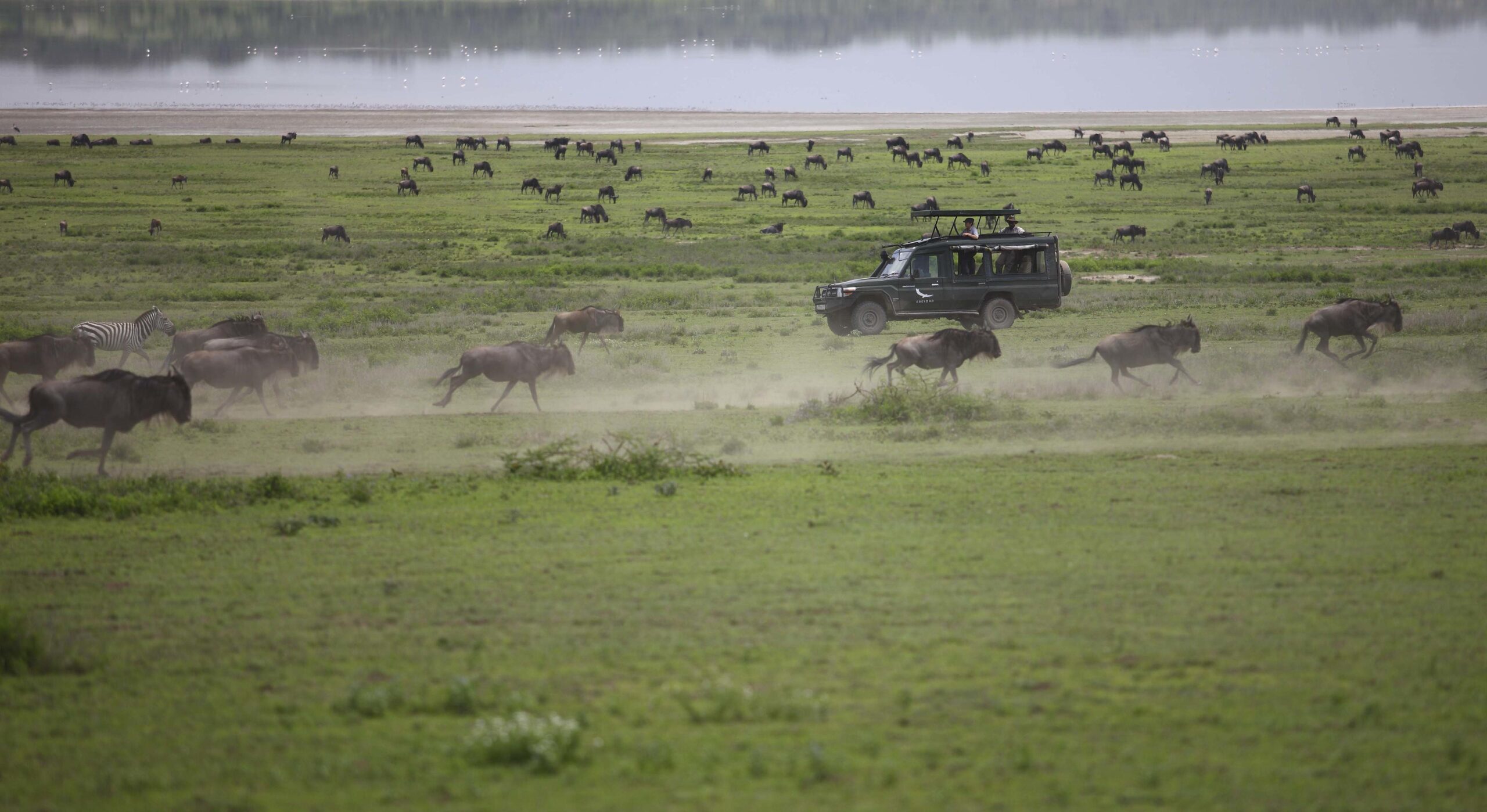In our latest blog post, we delve into the travels of our founder, Karin Jones, as she travels in the Serengeti in Tanzania.


Tanzania: Beyond the Great Migration with Artisans of Safari
On my trip (late January/early February) to Tanzania’s Serengeti National Park, I went to the wrong part of the Serengeti. Or so one would think. However, within minutes of landing at the Kogatende airstrip, what we saw before us was nothing short of holy… prides of lion at every turn, a rhino and her calf, a leopard in the rocks, and another in a tree, multitudes of Thompson’s gazelle and Topi, with herds of elephants all around. We saw multiple tiny klipspringer antelope pairs on rocks, hundreds of grunting hippos in the Mara River, a serval cat stalking at dusk, hyenas, cheetah brothers hunting, and a male ostrich with his harem strutting across the beautiful green landscape. And this was all just on the first two days.
After continuing by road to the Eastern Central Serengeti, to an area that has recently opened up after being closed for 20 years to allow the cheetah population to replenish itself, what followed was 4 more days of incredibly prolific sightings in what is now regarded as big-cat country, amid grassy plains with wildflowers and butterflies.
Did I mention we saw 2 different sightings of lions mating? We also saw a cheetah with its fresh kill, zebras by the hundreds, a giraffe and her brand-new baby, plus a pride of 15 female lions and their young, grooming each other with their tongues and rubbing their heads in greeting — with 60 paws intertwined so closely one could hardly tell where one lion body ended.






Predators don’t migrate. One can only be engrossed by watching thousands of gnus (wildebeest) for so long.
It was here that I had a realization that came to me after 37 years in the African safari biz — being away from the migration herds also has its benefits. Perhaps being down in the Southern Serengeti in February among the hundreds of tourists, with the ground tremoring beneath your feet, the air filled with grunts and clouds of dust as thousands of wildebeest move en masse was something to be experienced for just a few days before escaping to the relative emptiness of the Northern or Eastern Central Serengeti in February. There were literally no other vehicles around us for days in either of these two areas!
On our second day a couple flew up to the north, having just been down south among the hordes and herds. While they en-joyed seeing the wildebeest calving, they were absolutely riveted by the peace, quiet and amazing game viewing we were all ex-periencing up north, with no other tourists to be found.
Our guide talked about how much more he enjoyed being in the northern Serengeti (where we were) in February, compared to the high season up there from July-October, when his clients simply wanted to sit by the river for hours, alongside other vehicles waiting for a wildebeest crossing. It was enlightening!
Sure, watching the wildebeest plunging into the Mara River before snaking up the other side as crocodiles are snapping at them can be as exhilarating as it gets on safari. There’s the sheer volume of wildebeest and zebra dotted as far as the eye can see across the plains. The vulnerable young calves graze beside their mothers and the hungry predators watch every move. But remember, predators don’t migrate. And one can only be engrossed by watching thousands of gnus (wildebeest) for so long….
So, the take-away… while we’ll still send you to join your compadres in the midst of the thundering migration for a few days, we also recommend you spend an equal amount of time or more away from the masses, where there is resident game all year long, and you will be able to have your own private slice of Africa to yourself.

